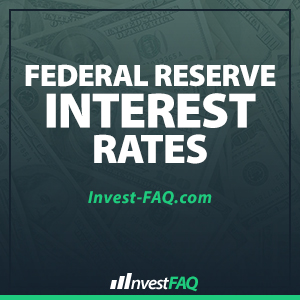 What are Federal Reserve Interest Rates?
What are Federal Reserve Interest Rates?
Contents
Federal Reserve interest rates is the amount the Federal Reserve charges banks to borrow money either in the short-term or in the long-term. Fed rates are one of the main tools the Federal Reserve uses to increase or decrease the money supply in an effort to control inflation and inflationary factors in the economy.
This article discusses the interest rates which are managed or influenced by the US Federal Reserve Bank, a collective term for the collection of Federal Reserve Banks across the country.
What Does the Fed Rate Mean for me?
The Fed Rate has a drastic effect on every citizen. Some people think that the Federal Reserve only works with large banks, so it won’t affect you personally. That idea couldn’t be further from the true.
The Federal Reserve controls the interest rates that banks can borrow money at. This in turn has a trickle down effect to the consumers and citizens by way of mortgage rates, business loan rates, and home equity lines of credit.
All three of these types of loan are affected when the Fed changes interest rates. If you are thinking about taking out a bank loan when the Federal Reserve is considering raising interest rates, it’s a good idea to talk with your accountant. Your CPA will be able to show you in his CPA prep course how your interest rates will increase your personal finances on a monthly basis if the Fed decides the raise or lower them.
It’s always a good idea to check with your financial professional before considering any type of loan or contract that will require you to make monthly interest payments.
Types of Federal Reserve Interest Rates
Discount Rate
The Discount Rate is the interest rate charged by the Federal Reserve when banks borrow “overnight” from the Fed. The discount rate is under the direct control of the Fed. The discount rate is always lower than the Federal Funds Rate (see below).
Generally only large banks borrow directly from the Fed, and thus get the benefit of being able to borrow at the lower discount rate. As of April 1997, the discount rate was 5.00%.
Federal Funds Rate
The Federal Funds Rate is the interest rate charged by banks when banks borrow “overnight” from each other. The funds rate fluctuates according to supply and demand and is not under the direct control of the Fed, but is strongly influenced by the Fed’s actions. As of April 1997, the target funds rate is 5.38%; the actual rate varies above and below that figure.
The Fed adjusts the funds rate via “open market operations”. What actually happens is that the Fed sells US treasury securities to banks. As a result, the bank reserves at the Fed drop. Given that banks have to maintain at the Fed a certain level of required reserves based on their demand deposits (checking accounts), they end up borrowing more from each other to cover their short position at the Fed. The resulting pressure on intra-bank lending funds drives the funds rate up.
The Fed has no idea of how many billions of US treasuries it needs to sell in order for the funds rate to reach the Fed’s target. It goes by trial and error. That’s why it takes a few days for the funds rate to adjust to the new target following an announcement.
Adjustments in the discount rate usually lag behind changes in the funds rate. Once the spread between the two rates gets too large (meaning fat profits for the big banks which routinely borrow from the Fed at the discount rate and lend to smaller banks at the funds rate) the Fed moves to adjust the discount rate accordingly. It usually happens when the spread reaches about 1%.
Another interest rate of significant interest is the Prime Rate, the interest that a bank charges its “best” customers. There is no single prime rate, but the commercial banks generally offer the same prime rate. The Fed does not adjust a bank’s prime rate directly, but indirectly. The change in discount rates will affect the prime rate. As of April, 1997 the prime rate is 8.5%.
For an in-depth look at the Federal Reserve, get the book by William Greider titled Secrets of the temple: How the Federal Reserve runs the country.
Why Does the Federal Reserve change interest rates?
The Federal Reserve is tasked with the job of regulating the money supply in the economy. The money supply in correlation with the production of goods controls the rate of inflation. If there are too many dollars chasing too few goods, inflation will occur and the currency will lose value.
The Federal Reserve changes interest rates to control the rate of inflation and minimize its effects on the greater economy.
Article Credits:
Contributed-By: Jeffrey J. Stitt, Himanshu Bhatt, Nikolaos Bernitsas, Joe Lau
